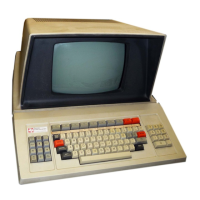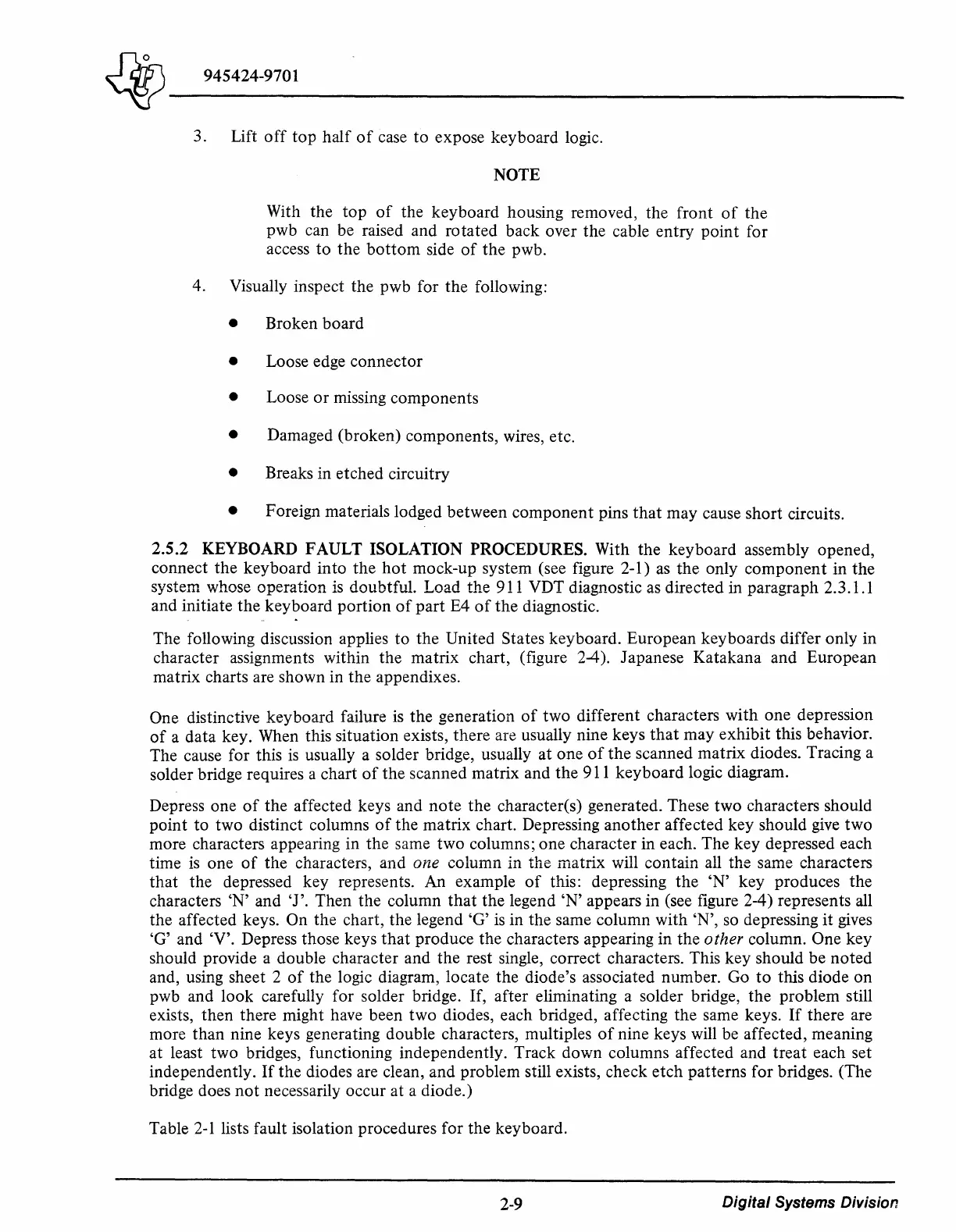~-------
~
945424-9701
3. Lift
off
top
half
of
case
to
expose keyboard logic.
NOTE
With the top
of
the keyboard housing removed, the front
of
the
pwb can be raised and rotated back over the cable entry point for
access
to
the
bottom
side
of
the pwb.
4. Visually inspect the pwb for the following:
• Broken board
• Loose edge connector
• Loose
or
missing components
• Damaged (broken) components, wires, etc.
• Breaks in etched circuitry
• Foreign materials lodged between component pins
that
may cause short circuits.
2.5.2 KEYBOARD FAULT ISOLATION PROCEDURES. With the keyboard assembly opened,
connect the keyboard into the
hot
mock-up system (see figure 2-1)
as
the only component in the
system whose operation is doubtful. Load the 911 VDT diagnostic
as
directed in paragraph 2.3.1.1
and initiate the keyboard portion
of
part
E4
of
the diagnostic.
The following discussion applies to the United States keyboard. European keyboards differ only in
character assignments within the matrix chart, (figure 2-4
).
Japanese Katakana and European
matrix charts are shown in the appendixes.
One distinctive keyboard failure
is
the generation
of
two different characters with one depression
of
a data key. When this situation exists, there are usually nine keys
that
may exhibit this behavior.
The cause for this
is
usually a solder bridge, usually at one
of
the scanned matrix diodes. Tracing a
solder bridge requires a chart
of
the scanned matrix and the 911 keyboard logic diagram.
Depress one
of
the affected keys and note the character(s) generated. These two characters should
point to two distinct columns
of
the matrix chart. Depressing another affected key should
give
two
more characters appearing in the same two columns; one character in each. The key depressed each
time
is
one
of
the characters, and one column in the matrix will contain all the same characters
that
the depressed key represents. An example
of
this: depressing the
'N'
key produces the
characters 'N' and 'J'. Then the column
that
the legend
'N'
appears in (see figure 2-4) represents all
the affected keys. On the chart, the legend
'G'
is
in the same column with 'N', so depressing
it
gives
'G' and 'V'. Depress those keys
that
produce the characters appearing in the other column. One key
should provide a double character and the rest single, correct characters. This key should be noted
and, using sheet 2
of
the logic diagram, locate the diode's associated number. Go
to
this diode
on
pwb and look carefully for solder bridge.
If,
after eliminating a solder bridge, the problem still
exists, then there might have been
two
diodes, each bridged, affecting the same keys.
If
there are
more than nine keys generating double characters, multiples
of
nine keys will be affected, meaning
at
least two bridges, functioning independently. Track down columns affected and treat each set
independently.
If
the diodes are clean, and problem still exists, check etch patterns for bridges. (The
bridge does
not
necessarily occur at a diode.)
Table
2-1
lists fault isolation procedures for the keyboard.
2-9
Digital
Systems
Division

